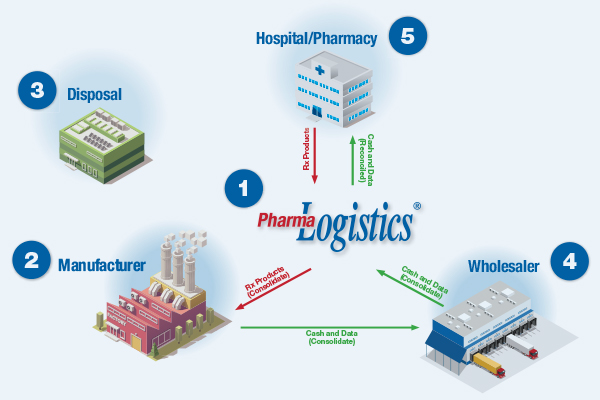A large part of your role as hospital pharmacy technician is inventory management: keeping an accurate record of the products your pharmacy has in stock. Overall, the goal of your pharmacy is to order and stock the correct products and quantities to meet the needs of the hospital’s patient population.
This includes removing expired or otherwise unusable products from your inventory, by working with a third party to return expired products to the manufacturer or wholesaler for credit. This “drug return” process is also known as reverse distribution.
Often, this process is coordinated by a reverse distribution company, e.g., Pharma Logistics. This company takes a hospital pharmacy’s expired drug products and sends them back to the manufacturers for credit. This credit is then sent to the hospital. An overview of this process is shown in the diagram below:

- The reverse distribution company sorts and batches products by manufacturer, wholesaler, and pharmacy. The company then calculates the return credit value of returnable products. This is based on the manufacturer or wholesaler product policies.
- Returnable products are sent to the manufacturer or manufacturer’s processor.
- Controlled substances or hazardous waste are disposed of in compliance with applicable laws.
- After receiving the returned products, the manufacturer sends credit payments to the wholesaler, who then passes along payments to the reverse distribution company.
- The reverse distribution company then sends payments to the hospital. (Note: In some cases, some manufacturers will send credit payments directly to the hospital.)
To learn more about how to best manage your pharmaceutical returns process, download our handbook.


